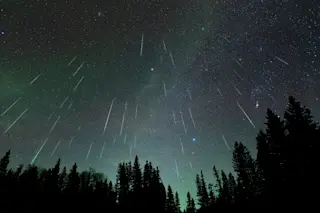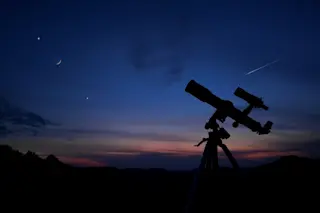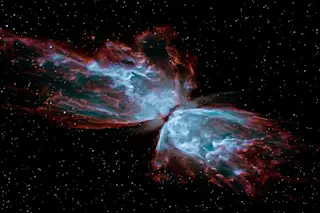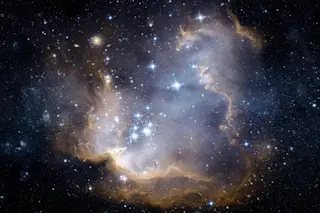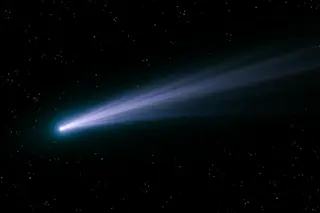When astronomer Richard Ellis of the California Institute of Technology set out to study the most distant reaches of the universe, he realized no observatory on Earth would be sensitive enough. So he turned to a really big telescope: an entire cluster of galaxies, whose enormous mass bends space and amplifies the light of more remote objects like a magnifying glass. Aided by this phenomenon, called a gravitational lens, Ellis and his colleagues at Caltech, along with collaborators in France and the Netherlands, glimpsed one of the building blocks of modern galaxies.
Using the Hubble Space Telescope, the astronomers had pinpointed parts of the sky where potentially useful gravitational lenses exist. When they pointed Hawaii's Keck telescope at one of those spots, they struck gold: The lens revealed an extremely faint star cluster 13.4 billion light-years away, dating from a time before full-fledged galaxies seem to have formed. John Huchra, an astronomer at Harvard University, is struck by the perfect celestial alignment that made the cluster visible. "You have to get really lucky—drawing a royal flush in poker, that kind of lucky," he says. Ellis believes similar systems may have been common in the early universe. This discovery bolsters the theory that colliding small clusters created the galaxies we see today.

The gravity of cluster Abell 2218 magnifies and splits the light from a protogalaxy (inset).Photographs courtesy of NASA/Space Telescope Science Institute










